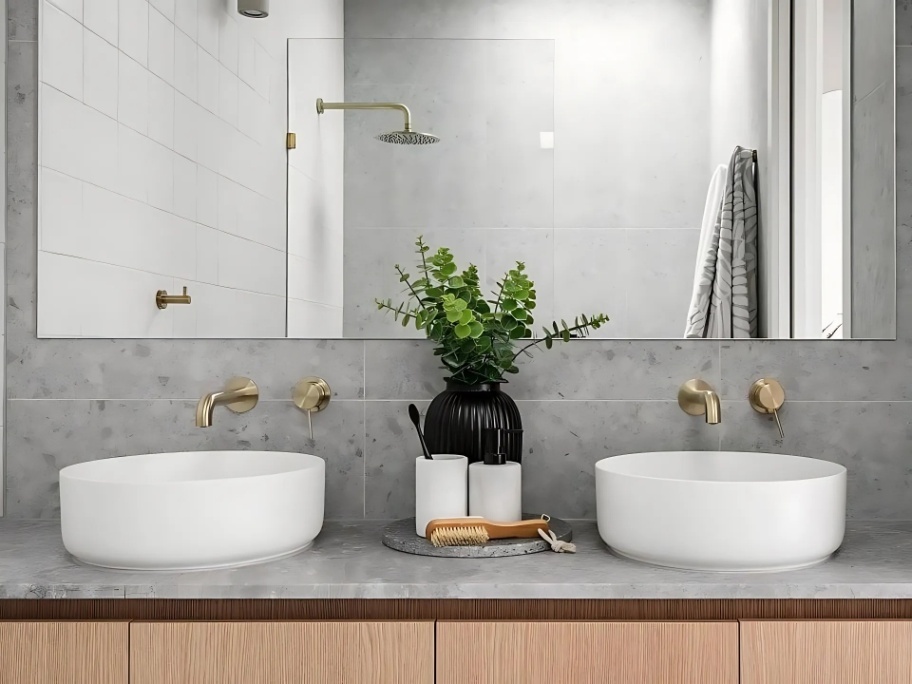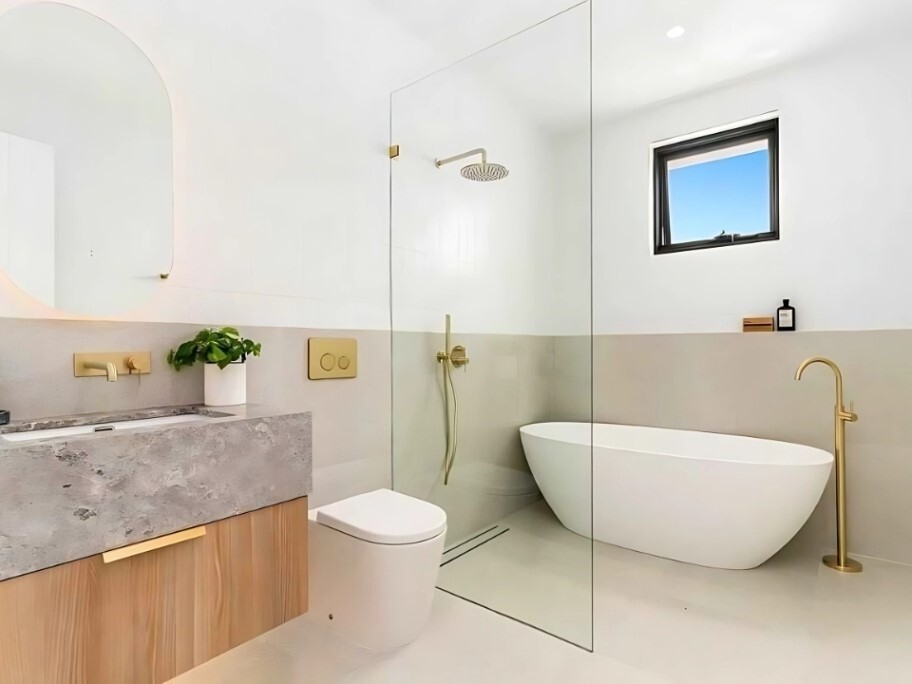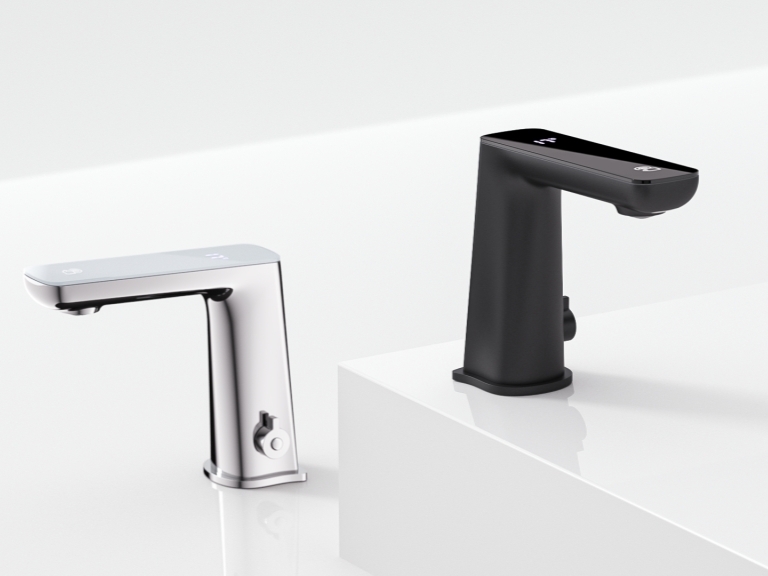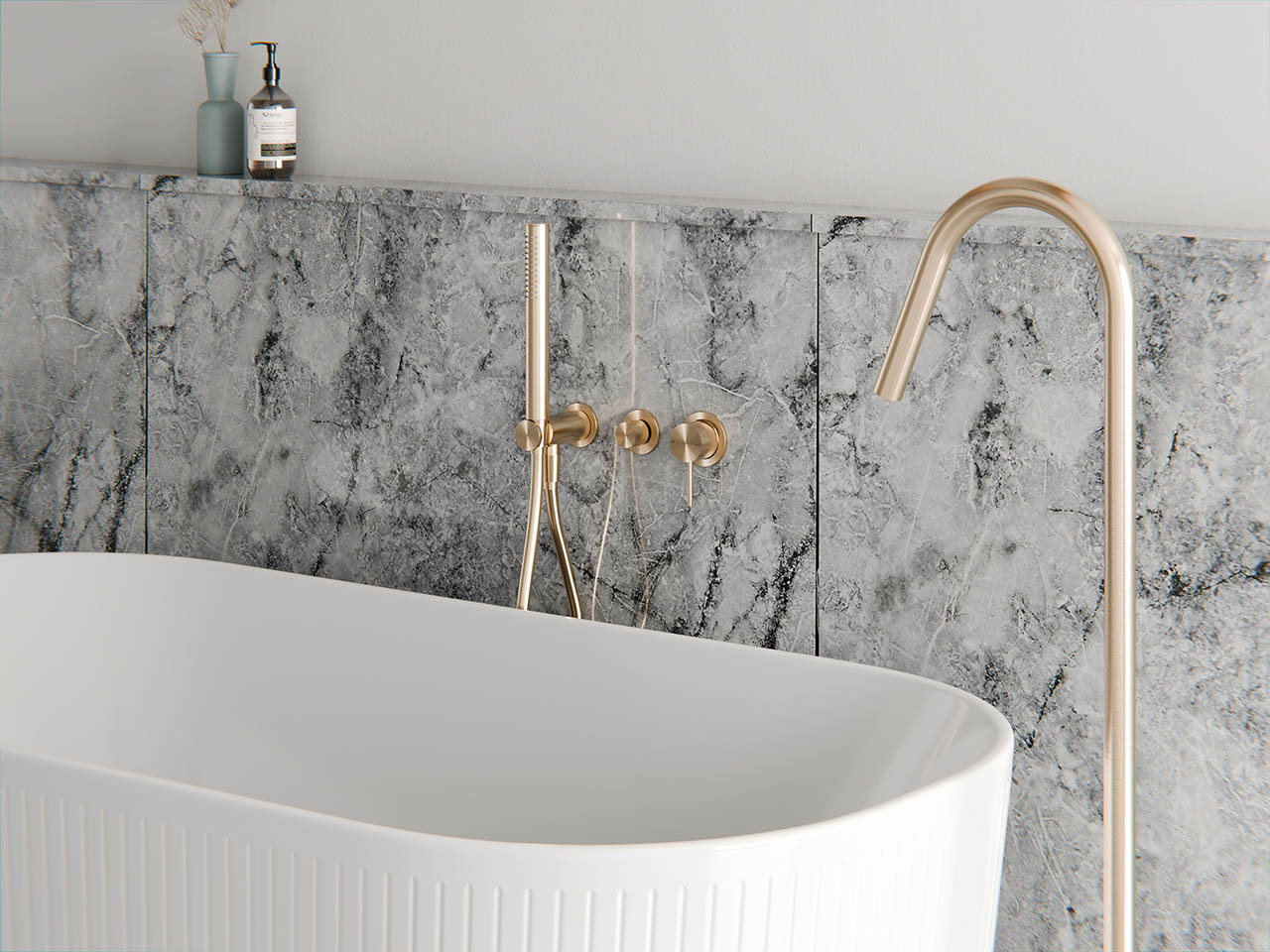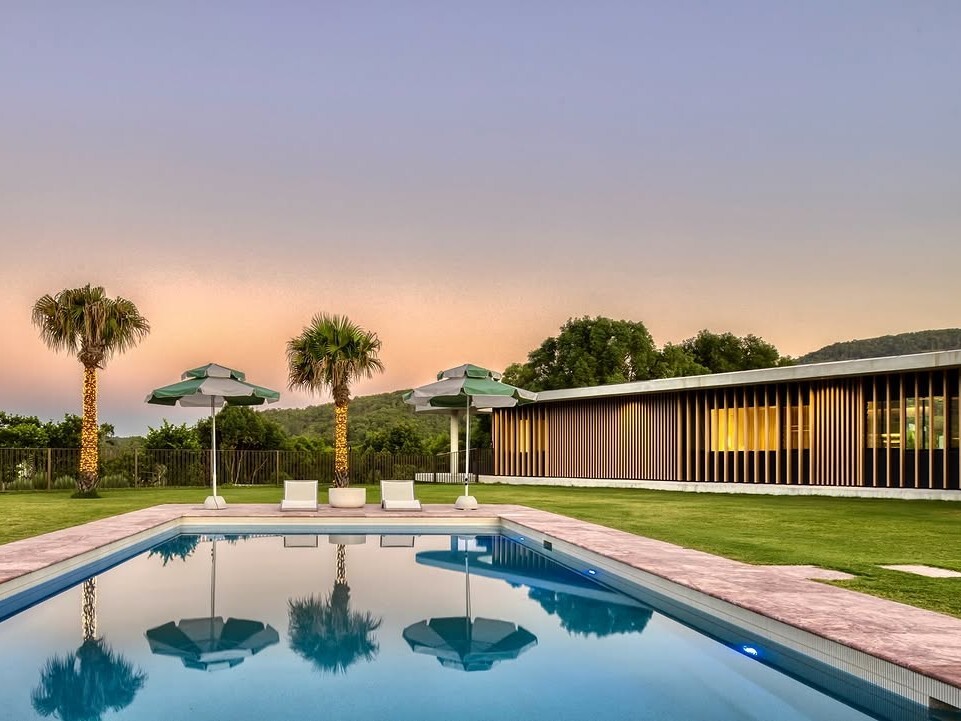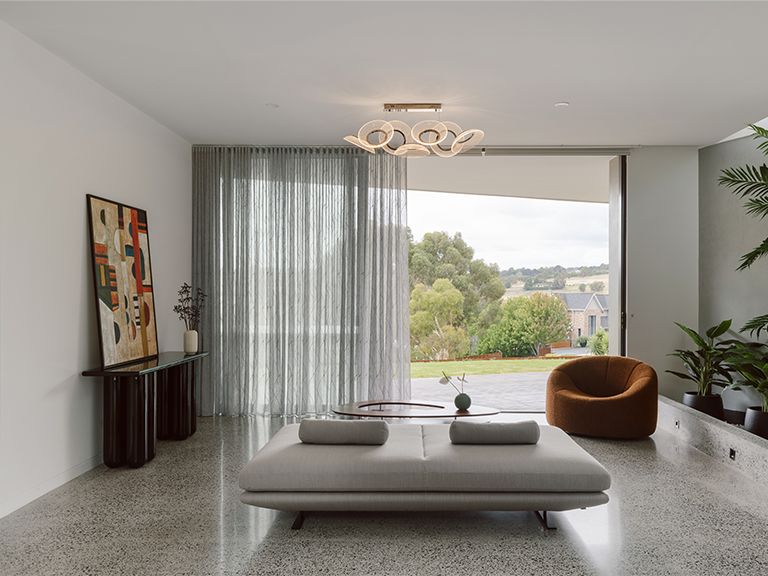
From Bauhaus to Brutalism: The Story of Two Architectural Revolutions
From sleek minimalism to raw concrete giants, Bauhaus and Brutalism shaped modern architecture in radically different ways. Discover how Bauhaus’ clean, functional designs evolved into Brutalism’s bold, unpolished structures—and why both styles still influence our cities today.
You ever walk past a building and wonder, What were they thinking when they built this? Some buildings feel sleek, modern, and effortlessly stylish, while others hit you with raw concrete and a heavy, almost intimidating presence. These differences aren’t random. They’re the result of two architectural revolutions: Bauhaus and Brutalism.
Bauhaus was all about simplicity, function, and a clean, futuristic aesthetic. Brutalism, on the other hand, took those ideas and made them heavier, rawer, and unapologetically bold. Both movements changed the way we design and think about buildings, and whether people love them or hate them, they still shape architecture today.
In this article, we’ll break down the journey from Bauhaus to Brutalism—how one led to the other, what made each movement unique, and why they still matter.
In case you are looking for kitchen and bathroom tapware and accessories to match your design aesthetic, whether Bauhaus or Brutalism, Nero Tapware’s collection of luxurious and minimalist tapware will surely appeal to you. We offer products in various finishes including gun metal, matte black, brushed bronze, graphite, and more in our Serenity, Zen, Mecca Care, Opal, and other collections. Contact us now for further details!
The Bauhaus Movement

The Walter Gropius-designed Bauhaus building in Dessau
(Source: Artland Magazine)
Founding and Philosophy
The Bauhaus Movementall started in 1919, right after World War I. Germany was in rough shape, and everything—art, design, even daily life—felt outdated. Enter Walter Gropius, an architect with a radical idea: what if we erased the old distinctions between artists, designers, and craftsmen? What if architecture, painting, sculpture, and furniture-making all worked together under one vision?
That vision became the Bauhaus School, founded in Weimar, Germany. Gropius wasn’t just opening a school—he was setting the foundation for an entirely new way of thinking. The core idea? Form follows function. Every object, every building, every design should be stripped down to what’s essential. No unnecessary details, no waste, just pure efficiency and beauty in simplicity.
Bauhaus wasn’t just about making things look good. It was about designing for the modern world—using new materials, embracing industrial production, and making high-quality design accessible to everyone, not just the wealthy.
Key Design Principles
Bauhaus design is instantly recognizable once you know what to look for. Here are the key features that define it:
- Minimalism: No excessive decoration, just clean lines and geometric shapes.
- Functionality: If it doesn’t serve a purpose, it doesn’t belong.
- Industrial Materials: Steel, glass, and concrete were preferred over ornate wood carvings and heavy stone.
- Mass Production: Designs were meant to be replicated and affordable, rather than handcrafted luxury items.
A perfect example? The Wassily Chair by Marcel Breuer. Instead of traditional wooden frames, he used bent steel tubes, inspired by bicycle handlebars. It looked futuristic, it was strong yet lightweight, and it followed Bauhaus’ philosophy to the letter.

The Wassily Chair by Marcel Breuer
(Source: The Metropolitan Museum of Art)
Notable Works and Architects
Bauhaus wasn’t just a school—it was a movement that produced some of the most influential architects and designers of the 20th century. Here are a few key figures and their iconic works:
- Walter Gropius – Bauhaus School, Dessau (1925-1926): A perfect example of Bauhaus design, with its clean lines, glass curtain walls, and functional layout.
- Marcel Breuer – Wassily Chair (1925): One of the first tubular steel furniture designs, sleek and minimal.
- Ludwig Mies van der Rohe – Barcelona Pavilion (1929): A masterpiece of minimalism and open space, using glass, steel, and marble to create a sense of effortless elegance.
Bauhaus spread far beyond Germany, especially after the Nazis shut down the school in 1933. Many of its architects and designers fled to other countries, taking their ideas with them. That’s why you see Bauhaus influences everywhere—from modern office buildings to minimalist home interiors.
Also Read:Rococo Revival: How to Bring 18th-Century Elegance into Modern Homes
Transition to Modernism
The Bauhaus Influence Spreads Across the World
As mentioned, when the Nazis shut down the Bauhaus School in 1933, its ideas didn’t vanish. They traveled. Many of the movement’s leading architects and designers fled Germany, carrying their philosophy to new parts of the world. The United States, in particular, became a new home for Bauhaus thinking.
Walter Gropius landed at Harvard’s Graduate School of Design, where he shaped a new generation of architects. Ludwig Mies van der Rohe went to Chicago, taking over the Illinois Institute of Technology and further developing what became known as the International Style—a logical extension of Bauhaus principles, emphasizing clean lines, modern materials, and geometric precision.
But Bauhaus wasn’t just about buildings. Its reach extended to furniture, typography, and even corporate branding.
You can still see its influence today in minimalist furniture, sans-serif fonts like Helvetica, and the sleek, functional layouts of modern homes and offices. Bauhaus changed the way the world thought about design—making it simpler, more practical, and built for everyday life.
The Evolution into Mid-Century Modernism
By the 1940s and 1950s, Bauhaus had evolved into something more livable. Architects started softening its strict, industrial look. They introduced warmer materials, organic shapes, and a stronger connection between indoor and outdoor spaces. They pulled in ideas from Scandinavian design, post-war technology, and good old American ingenuity. The result was Mid-Century Modernism—a movement that took the best of Bauhaus and made it feel more human.

Eames House (1949) by Charles and Ray Eames
(Source: Architectural Digest)
A perfect example is the Eames House (1949) by Charles and Ray Eames. It was modern but inviting, made with industrial materials like steel and glass but balanced them with wood, color, and personal touches. It wasn’t just about function anymore—it was about how spaces felt.
At this point, modern architecture had taken root. But while some architects were refining Bauhaus ideas, others were about to take a sharp turn in a different direction. They wanted something bolder, heavier—something that spoke to the tough realities of post-war reconstruction. This was the beginning of Brutalism—a movement that used raw concrete and striking geometric forms to create buildings that felt solid, enduring, and undeniably powerful.
Also Read:How to Design a Nancy Meyers Kitchen That Feels Like a Movie Set
Emergence of Brutalism
Origins and Philosophy
After World War II, cities were in ruins, economies were struggling, and people needed homes, schools, and offices—fast. Architecture had to be practical, durable, and affordable. There was no time for fancy decorations or luxury.
That’s where Brutalism came in. It wasn’t about looking sleek or stylish. It was about showing the raw truth of a building—how it was built, what it was made of, and why it was there. The name comes from the French termbéton brut—which means “raw concrete.”
Le Corbusierused this term to describe his unfinished concrete surfaces. But the name Brutalism itself was introduced in the early 1950s by British architects Alison and Peter Smithson. It was later made popular by British critic Reyner Banham.
Brutalism wasn’t just about concrete. Architects believed buildings should be honest. No fake finishes, no extra frills—just pure function and structure. Many Brutalist buildings were designed for public use, like housing projects, universities, and government offices. The goal? To build spaces that worked for people and could last for generations.
Key Design Characteristics
Brutalist buildings are impossible to miss. They don’t try to blend in or impress with elegance. They stand bold, unshaken, and built to last. Here’s what makes them unique:
- Exposed concrete: No paint, no decoration—just solid, rough surfaces that show every texture from the construction process.
- Bold, geometric forms: Thick walls, sharp angles, and patterns of stacked blocks make these buildings look strong and unbreakable.
- Massive scale: Many Brutalist buildings are large, designed to hold big crowds and withstand years of use.
- No unnecessary frills: Every part of the building has a purpose. If a wall is blank, it’s meant to be. If a stairway is oversized, it’s built to handle heavy foot traffic.
Brutalism wasn’t about making things look good in a traditional sense. It was about creating buildings that were useful, tough, and built to endure anything—from harsh weather to everyday wear and tear.
Key Examples and Architects
![]()
Boston City Hall: A Brutalist Icon by Kallmann, McKinnell, & Knowles
(Source: ArchEyes)
Brutalism spread across the world in the 1950s and ’60s. Governments and universities loved it because it was practical, affordable, and long-lasting. Some of the most famous examples include:
- Unité d’Habitation (1952) – Le Corbusie: A massive housing complex in France designed as a “vertical city.” It had apartments, shops, and communal spaces, proving that Brutalism could be both functional and community-driven.
- Yale Art and Architecture Building (1963) – Paul Rudolph: A bold, angular building in the U.S. that showcases Brutalism’s love for raw concrete and geometric precision.
- Trellick Tower (1972) – Ernő Goldfinger: A high-rise apartment building in London with a striking, fortress-like appearance. It was built as social housing but later became a sought-after landmark.
- Boston City Hall (1968) – Kallmann, McKinnell & Knowles: A powerful example of Brutalism in the U.S., designed with heavy concrete forms and a unique, blocky structure.
For years, Brutalism defined cityscapes around the world. It was efficient, straightforward, and honest. But not everyone loved it.
By the 1980s, many people saw these buildings as cold, ugly, and even oppressive. Some were torn down. But now, decades later, there’s been a shift. Brutalism is making a comeback, with some seeing it as a bold, lost art—a reminder of a time when architecture was built to serve, not just to impress. Today, efforts are being made to restore and preserve Brutalist buildings, proving that their tough, raw beauty still has a place in modern cities.
Also Read:Mixing Metals Like a Designer: The No-Fail Formula for a Luxe, Layered Look
Comparing Bauhaus and Brutalism
Different Ideas, Different Goals
Bauhaus and Brutalism might look like distant cousins at first glance—one led to the other, after all—but deep down, they weren’t aiming for the same thing.
- Bauhaus was about balance. It believed that design should serve a purpose, but that didn’t mean it had to be cold or lifeless. It wanted to bring together art, craftsmanship, and industry to create things that were both useful and visually appealing.
- Brutalism was about creating cost-effective, durable, and socially-minded architecture as a reaction to post-war reconstruction needs. It took function and stripped it down to the bone. No decoration, no polish—just raw materials, pure structure, and efficiency. It wasn’t about making things beautiful in the traditional sense. It was about showing buildings exactly as they were, flaws and all.
How They Look and Feel
| Feature | Bauhaus | Brutalism |
| Materials | Smooth steel, glass, and clean industrial finishes are common | Raw concrete, exposed brick, heavy, unpolished materials |
| Form | Light, balanced, simple geometry | Heavy, solid, imposing, almost fortress-like |
| Functionality | Practical but also refined and elegant | Practical, but built for pure durability and mass use |
| Philosophy | A perfect mix of art and function | A brutal, no-nonsense approach to efficiency |
| Public Perception | Modern, stylish, timeless | Often seen as cold, intimidating, or dystopian |
A Legacy That Still Shapes the World
Even though they followed different paths, both movements left their mark in ways we still see today.
- Bauhaus redefined modern design and architecture. Its DNA is everywhere—from sleek homes and glass office towers to furniture, product design, and even tech interfaces. Ever noticed how Apple products have that clean, simple, no-extras aesthetic? That’s pure Bauhaus thinking.
- Brutalism shaped public spaces and city planning. While it fell out of favor in the late 20th century, its buildings remain—and recently, people have started to appreciate them again. Many cities are restoring old Brutalist landmarks instead of tearing them down, seeing their raw, sculptural beauty in a new light.
Also Read:Japandi Bathroom Perfection: The Ultimate Guide to Serene, Stylish Spaces
The Revival and Future of These Styles

How Bauhaus Art Radically Changed the Modern Landscape
(Source: Invaluable)
The Bauhaus Revival: Timeless Minimalism
Bauhaus never really faded away. It just evolved, adapting to new generations and new needs. The clean lines, functional designs, and industrial materials that defined Bauhaus are still everywhere today. Walk into a modern home with sleek furniture, step into a glass-walled office tower, or even pick up your smartphone—whether you realize it or not, you're looking at Bauhaus principles in action.
The 21st-century world is practically built on Bauhaus ideas. You see them in:
- Minimalist architecture—homes and apartments designed with open layouts, big windows, and simple geometric forms.
- Technology and industrial design—think of how Apple’s products strip away unnecessary details to focus on pure function.
- Commercial and corporate buildings—skyscrapers and office spaces that prioritize efficiency, clarity, and light.
Even Scandinavian design, which champions simplicity, practicality, and a neutral color palette, owes a lot to Bauhaus thinking.
The reason Bauhaus remains so influential? It never gets old. It was built on the idea that design should serve people, and that’s always going to matter. Whether it’s a house, a chair, or a phone, Bauhaus is about making life easier, more beautiful, and more efficient—all without any unnecessary fluff.
The Brutalism Comeback: From Rejected to Respected
Brutalism wasn’t always admired. For decades, it was dismissed as cold, harsh, even dystopian. People called its buildings ugly—concrete monsters that made cities feel oppressive. Many were torn down, replaced with glassy, friendlier designs that fit modern tastes.
But here’s the funny thing: Brutalism is back.
It turns out, a lot of people have grown to appreciate its raw, unapologetic honesty. The same buildings that were once ridiculed are now admired for their boldness. What changed?
- Architects and designers started seeing them differently. Instead of just looking like blocks of concrete, these buildings are now seen as sculptural, powerful statements in form and function.
- Sustainability became a priority. Brutalist buildings, despite their rough exteriors, are built to last. Unlike glass-and-steel structures that require constant maintenance, raw concrete is tough and doesn’t need much upkeep.
- Pop culture embraced the aesthetic. Movies, photography, and video games now use Brutalist buildings to create a certain mood—futuristic, dramatic, sometimes even nostalgic.
Because of this newfound appreciation, many Brutalist buildings that were once slated for demolition are being preserved instead. There’s even an online movement celebrating their beauty, proving that what was once dismissed as an eyesore is now recognized as an important part of architectural history.
The Future: Can Bauhaus and Brutalism Coexist?
For all their differences, Bauhaus and Brutalism might not be as far apart as they seem. In fact, architects today are blending elements from both movements, creating buildings that are both functional and visually striking.
We’re seeing:
- Exposed concrete combined with sleek glass facades, merging Brutalism’s rawness with Bauhaus’s precision.
- Prefabrication and modular design (ideas straight from Bauhaus) being used in sturdy, large-scale urban housing projects (a nod to Brutalism).
- Tech-driven minimalism, where the clean, geometric look of Bauhaus meets the bold, unfiltered style of Brutalism in web and graphic design.
Instead of competing, these two architectural philosophies are influencing each other in unexpected ways. Bauhaus brings the precision and refinement, while Brutalism adds the weight and presence. Together, they’re shaping the future of design—both physical and digital.
Want more interior design tips? Check out our other blogs below!


